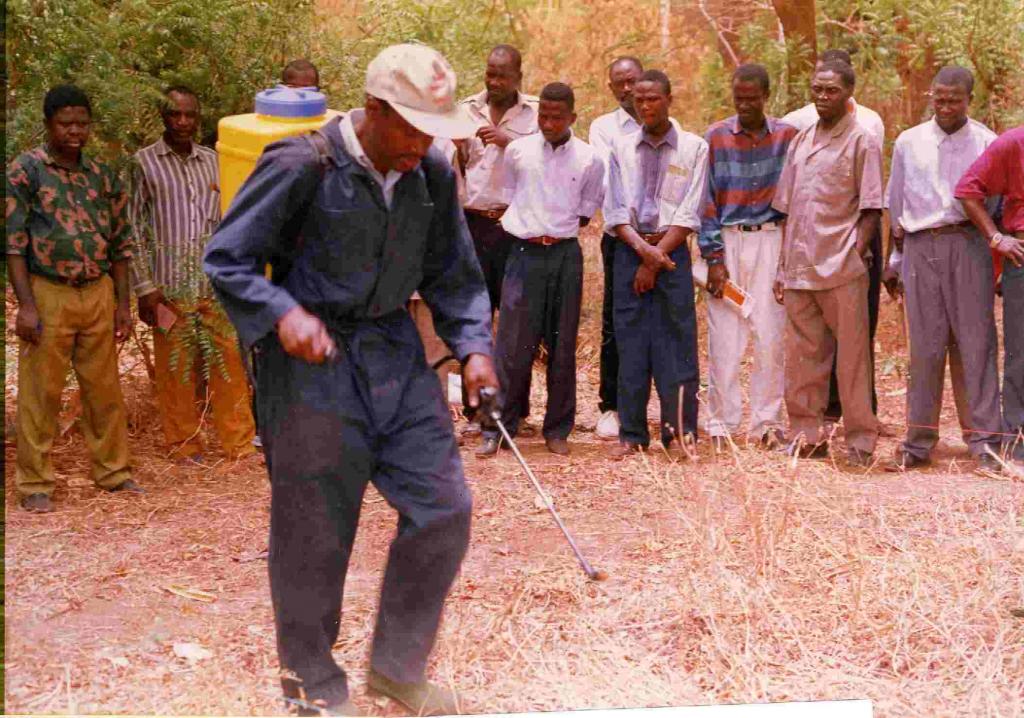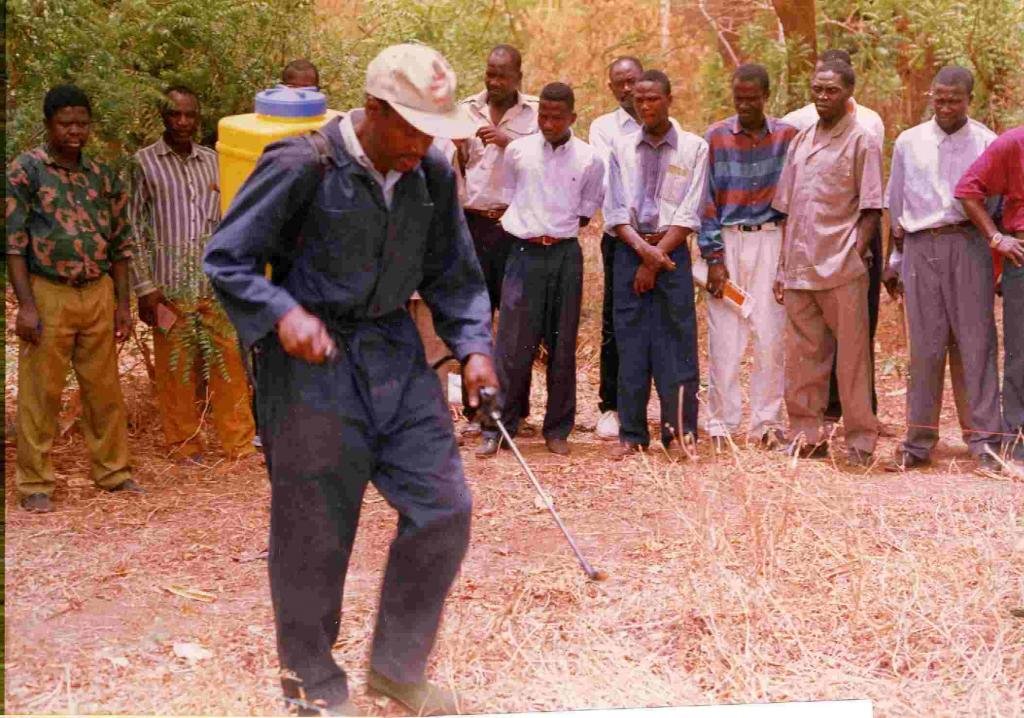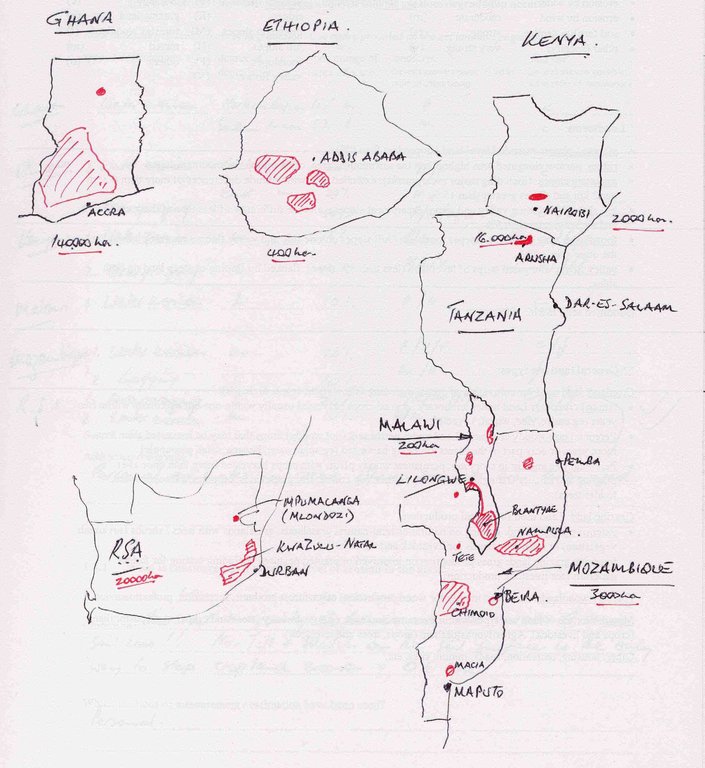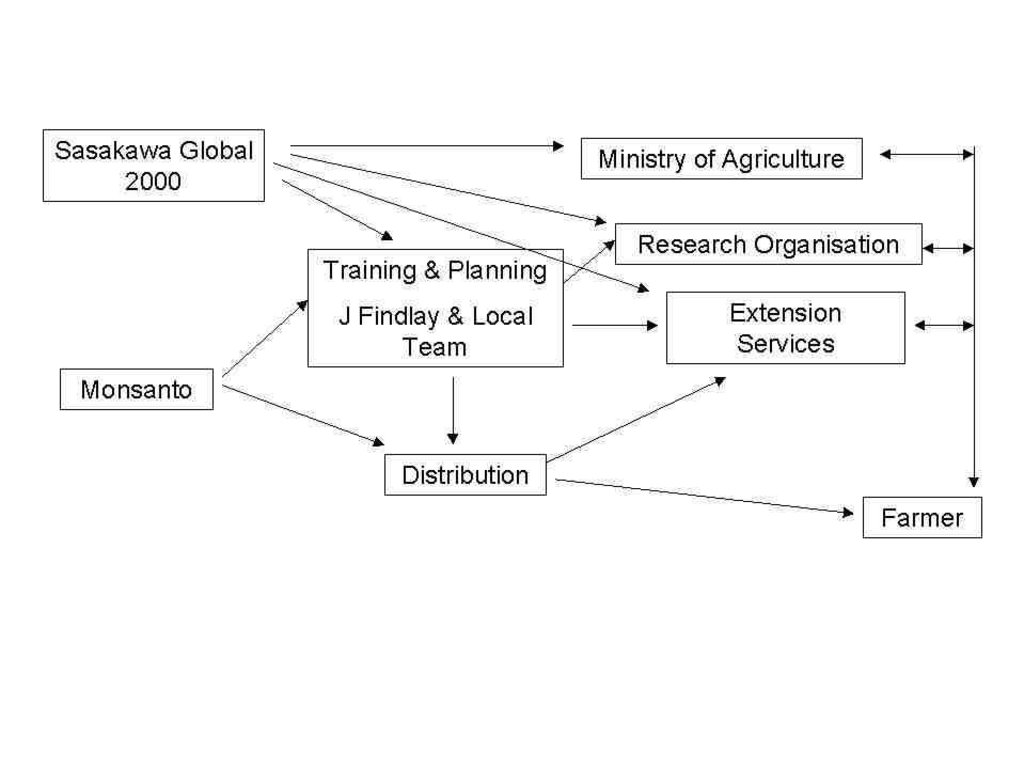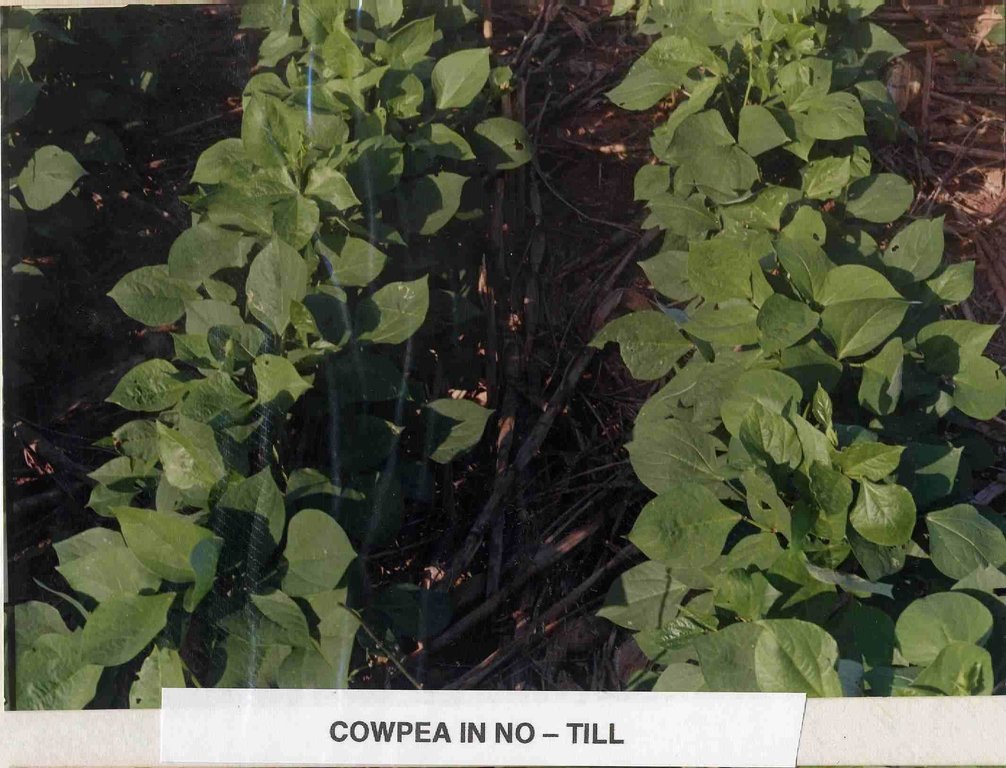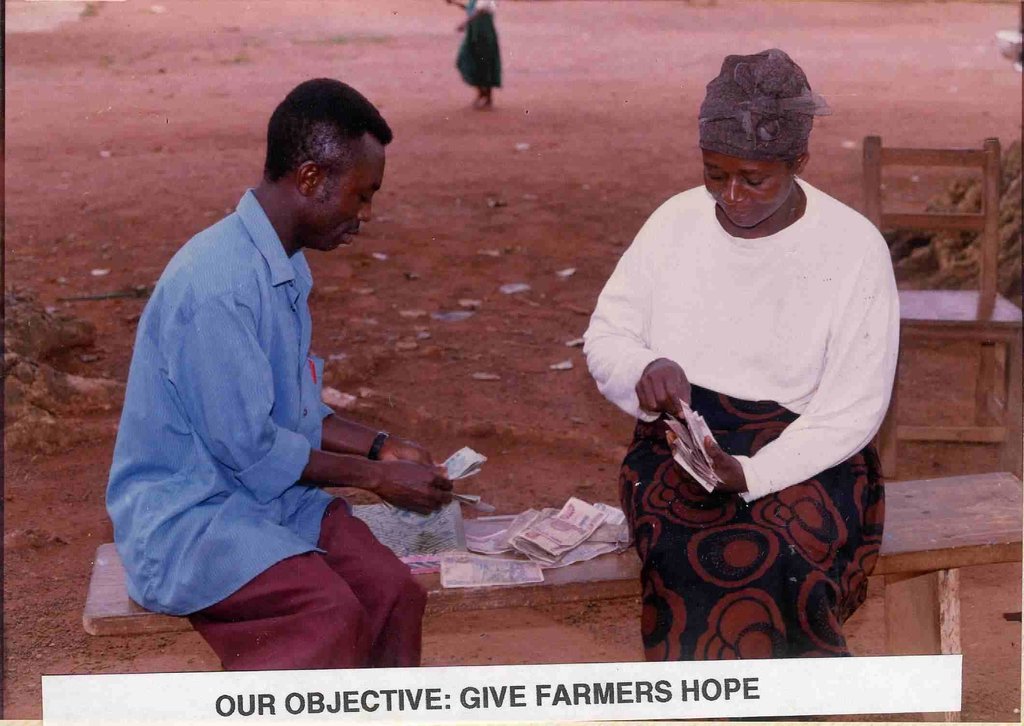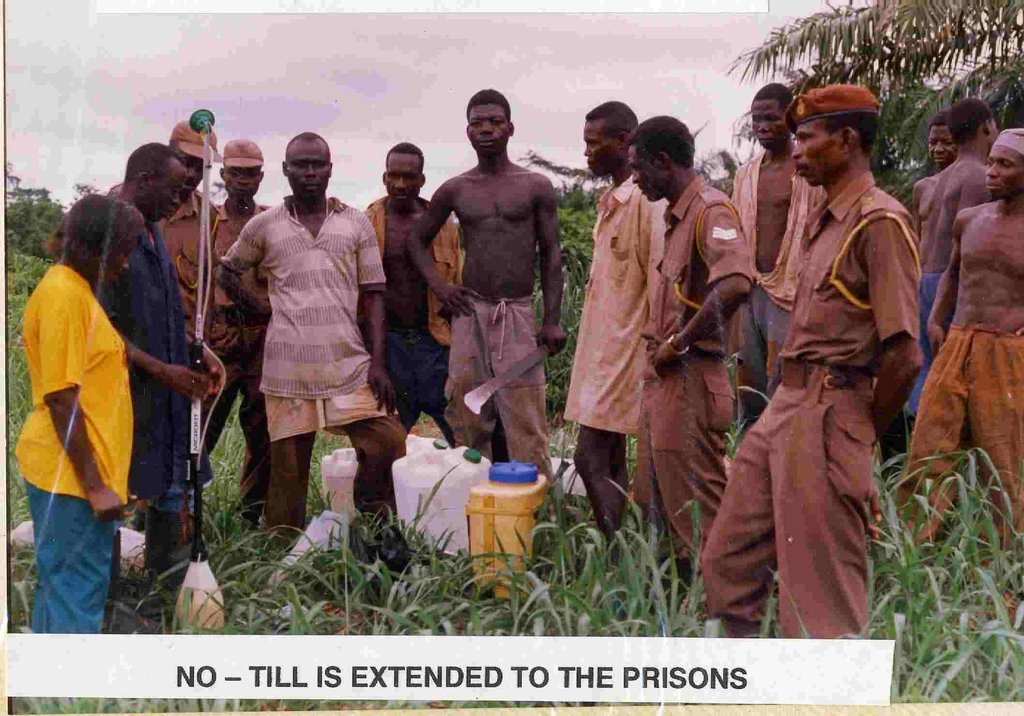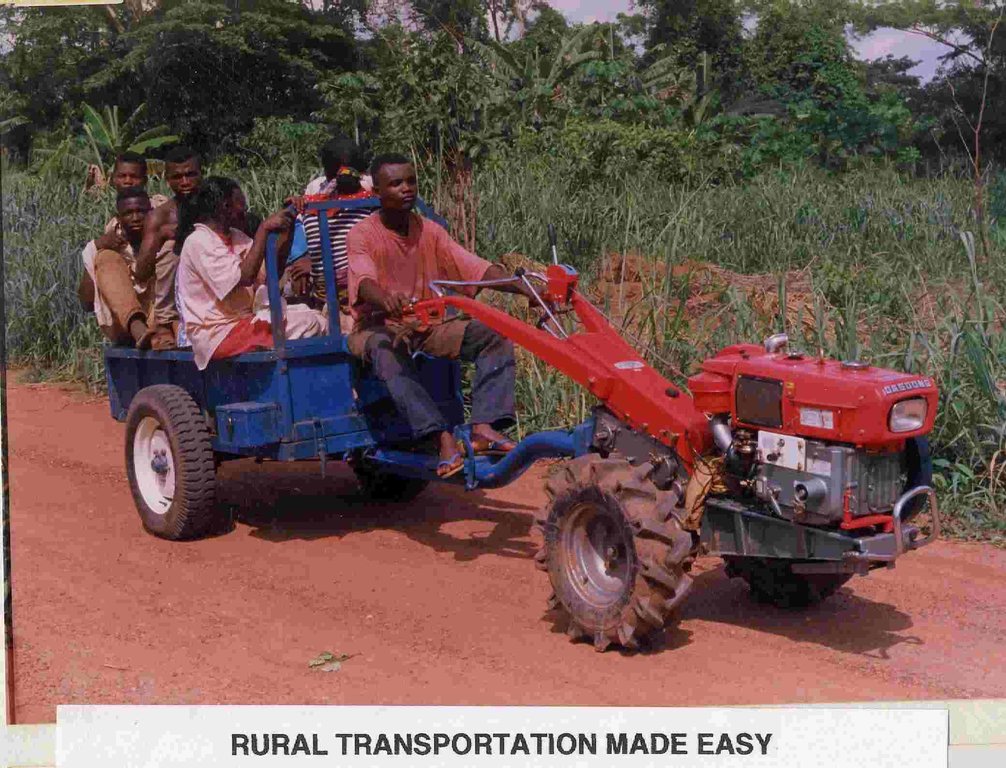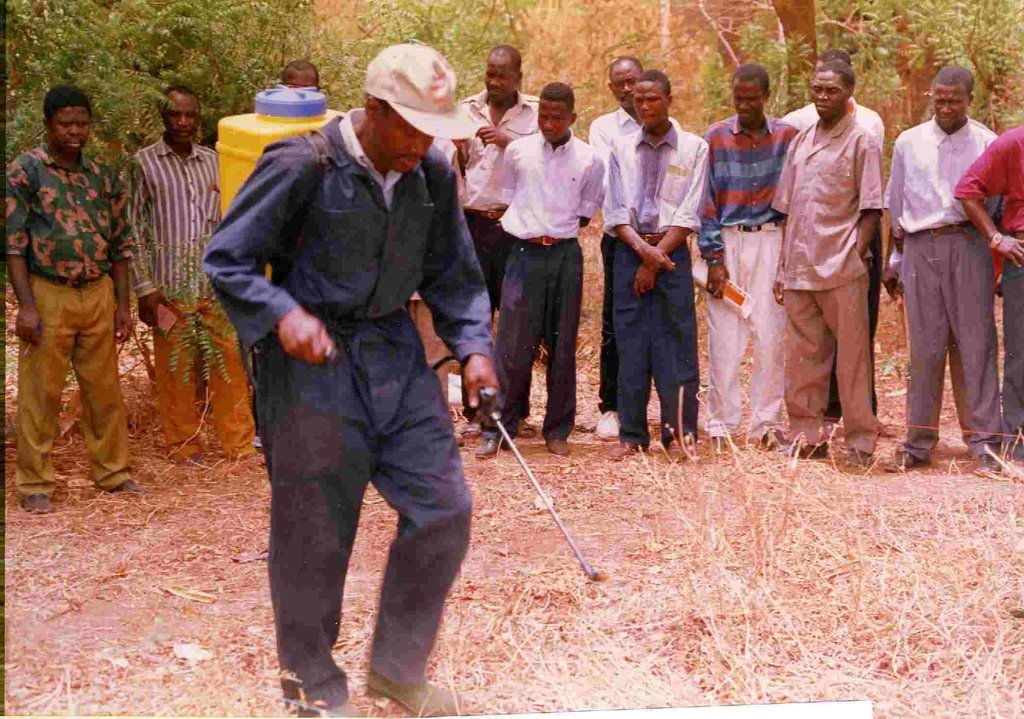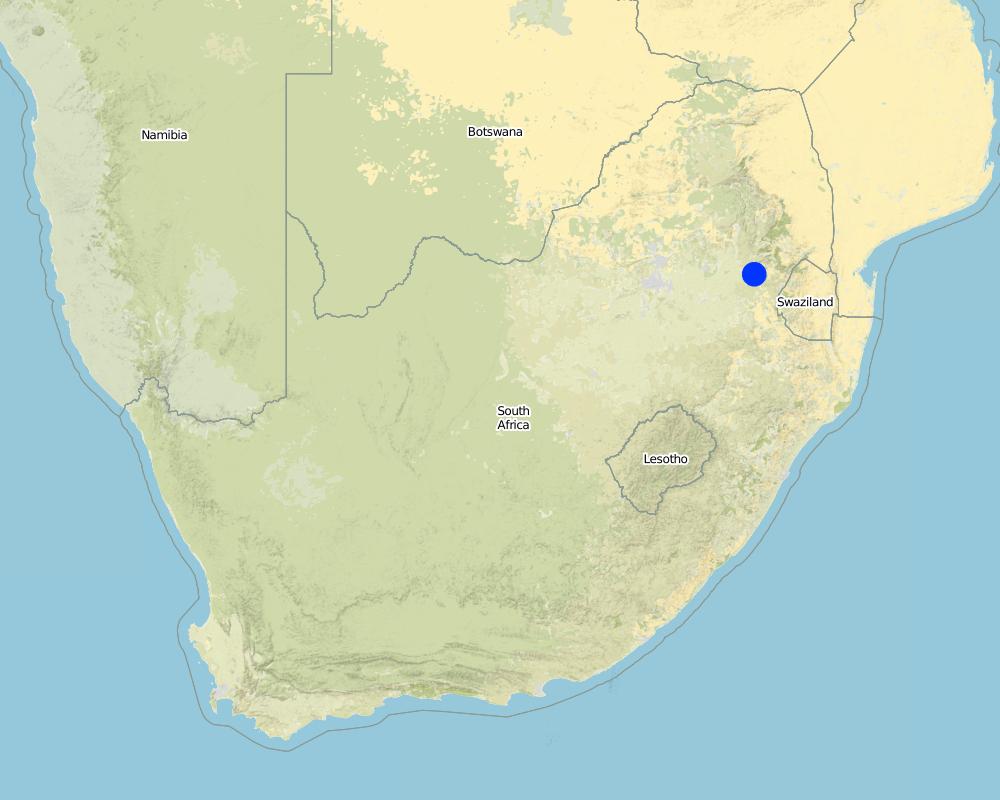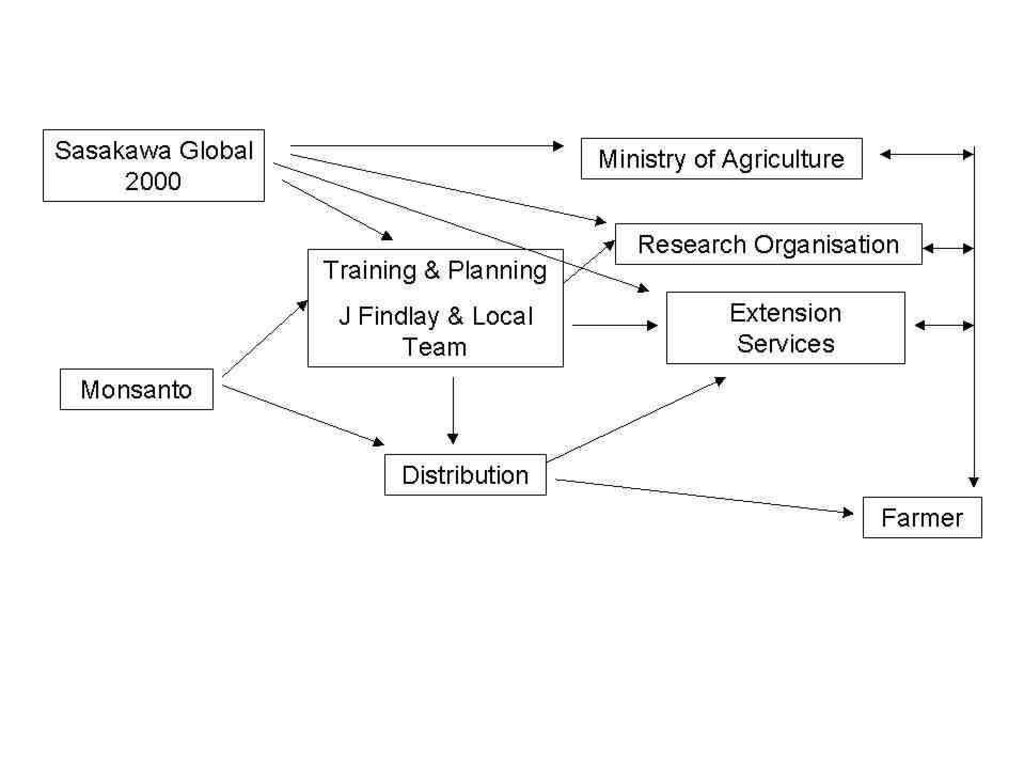All participants, with the emphasis of getting know-how to the farmer [جنوب أفريقيا]
- تاريخ الإنشاء:
- تحديث:
- جامع المعلومات: Unknown User
- المحرر: –
- المُراجع: Fabian Ottiger
approaches_2416 - جنوب أفريقيا
عرض الأقسام
توسيع الكل طي الكل1. معلومات عامة
1.2 تفاصيل الاتصال بالأشخاص الرئيسيين لمصدر المعلومات والمؤسسات المعنية بتقييم وتوثيق النهج
الشخص (الأشخاص) الرئيسي لمصدر المعلومات
متخصص في الإدارة المستدامة للأراضي:
Findlay James B R
جنوب أفريقيا
1.3 الشروط المتعلقة باستخدام البيانات الموثقة من خلال WOCAT
يوافق جامع المعلومات والشخص (لاشخاص) الرئيسي لمصدر المعلومات على الشروط المتعلقة باستخدام البيانات الموثقة من خلال WOCAT:
نعم
2. وصف نهج الإدارة المستدامة للأراضي
2.1 وصف موجز للنهج
Introduction of No-Till crop production systems to rural small scale farmers.
2.2 وصف تفصيلي للنهج
وصف تفصيلي للنهج:
Aims / objectives: Convert small-scale farmers from conventional ploughing to minimum tillage to no-till crop production. Introduce/upgrade technology by using certified seed, fertilisers, herbicides and pesticides. Associated cost increase results in a time saving which allows for additional production. Increased yields result in wealth creation. Develop marketing options for farmers e.g. a maize farmer can sell green maize (boiled or roasted) for human consumption, maize grain, maize meal, poultry feed or poultry, small or large livestock feed or the carcass (feedlots). Change perception that farmers produce food for own consumption only. They must produce a surplus for sale to generate an income which is wealth creation in the rural areas. Rich farmers = Wealthy Nation Poor farmers = Poor Nation Government policies must support rural farmers and ensure a good price for agricultural produce. Upgrade the knowledge/skills level of extension officers (E.O.s) - gain farmers respect for E.O.s. E.O.s must be measured on farmer performance. Improve the link and information flow from research organisations to E.O.s (and then to the farmer). Research organisations are encouraged to initiate no-till projects to support farmers and E.O.s, e.g. herbicides for weed problems; fertiliser deficiencies and recommendations; crop options.
2.3 صور عن النهج
2.5 البلد/المنطقة/المواقع التي تم تطبيق النهج فيها
البلد:
جنوب أفريقيا
المنطقة/الولاية/المحافظة:
Mpumalanga
Map
×2.6 تواريخ بدء وإنهاء تنفيذ النهج
أشر إلى سنة البدء:
1998
2.7 نوع النهج
- قائم على مشروع/برنامج
2.8 الغايات/الأهداف الرئيسية للنهج
The Approach focused mainly on SLM with other activities (Training. Field implementation. Technology implementation review. Input supply system. Finance support. Processing and marketing.)
Introduce no-till crop production systems. Make farming profitable. Create markers - input and output. Develop local knowledge / expertise. Reduce / stop soil erosion.
The SLM Approach addressed the following problems: Lack of political support (e.g. Tanzania). Policy/ Know-how's. Mechanisation is expensive - No-Till cheap - demonstrate. Soil and Water conservation. Crop surplus production - sale/process - financial benefit.
2.9 الظروف التي تمكن أو تعيق تنفيذ التقنية/التقنيات المطبقة بموجب النهج
المعايير والقيم الاجتماعية /الثقافية/ الدينية
- معيق
Overgrazing - too many cattle/too little food Communal land - no responsibility
Treatment through the SLM Approach: Plant pastures - fewer cattle (!!!!)
توفر/الوصول إلى الموارد والخدمات المالية
- معيق
Banks do not educate 'poor poverty stricken' farmers in to financial management.
Treatment through the SLM Approach: Banks - educate farmers / take a risk!
الإطار المؤسساتي
- معيق
Authorisation attitude by researchers
Treatment through the SLM Approach: Let farmers decide on the advantages of a system
الإطار القانوني (حيازة الأراضي، وحقوق استخدام الأراضي والمياه)
- تمكين/تمكيني
The existing land ownership, land use rights / water rights helped a little the approach implementation: hinder: moderate. Communal lands or insecurity of tenure does not encourage investment (money and time). After harvest - communal grazing!
- معيق
No legislation permitting genetically modified crops
Treatment through the SLM Approach: Introduce Demo legislation permitting modern agriculture
غير ذلك
- معيق
Tribal chiefs do not allow individual land ownership (freehold) = power
Treatment through the SLM Approach: Government must encourage private land ownership.
3. المشاركة وأدوار الأطراف المعنية
3.1 أصحاب المصلحة المعنيون بالنهج وأدوارهم
- مستخدمو الأراضي المحليون/المجتمعات المحلية
Farmer organisations (small limited)
Working land users were work equally divided between men and women (The technology was introduced to). Women probably appreciate the labour and time saving more than men. Socialy disadvantaged involved if they have knowledge on the details of inputs e.g. insect pest and control measures that work.
- متخصصون في الإدارة المستدامة للأراضي / مستشارون زراعيون
- القطاع الخاص
Monsanto - Agriculture input suppliers
- الحكومة الوطنية (المخططون، صانعو القرار)
Ministry of Agriculture - Extension services
- منظمة دولية
SG 2000
إذا كان هناك العديد من الأطراف المعنية، قم بالإشارة إلى الوكالة الرائدة:
Seskwane Global 2000 - organisation, government support. Monsanto - technology, training, inputs. Local - technology transfer.
3.2 انخراط مستخدمي الأراضي المحليين/المجتمعات المحلية في المراحل المختلفة للنهج
| انخراط مستخدمي الأراضي المحليين/المجتمعات المحلية | حدد من شارك وصف الأنشطة | |
|---|---|---|
| المبادرة/التحفيز | سلبي | other |
| التخطيط | سلبي | public meetings; Training of E.O. and farmers. |
| التنفيذ | الدعم الخارجي | responsibility for major steps; Farmers conduct own demonstration with E.O. support. |
| الرصد/التقييم | تفاعلي | measurements/observations; Farmer supervised by E.O. E.O. compiles report. |
| Research | تفاعلي | on-station |
3.3 مخطط التدفق (إذا كان متاحًا)
3.4 اتخاذ القرار بشأن اختيار تقنية/تقنيات الإدارة المستدامة للأراضي
حدد من الذي قرر اختيار التقنية/التقنيات التي سيتم تنفيذها:
- متخصصون في الإدارة المستدامة للأراضي بشكل أساسي، بعد التشاور مع مستخدمي الأراضي
اشرح:
directive (top-down). Also by extension officers. Directive as-well as consultative. A successful method was developed and adopted for local conditions.
Decisions on the method of implementing the SLM Technology were made by by SLM specialists alone (top-down). directive (top-down). Also by politicians and leaders. Directive as-well as consultative. Many land owners/users have no knowledge of fertilisers, pesticides, seed cultivar choice. Guidance is essential.
4. الدعم الفني وبناء القدرات وإدارة المعرفة
4.1 بناء القدرات/التدريب
هل تم تقديم التدريب لمستخدمي الأراضي / الأطراف المعنيين الآخرين؟:
نعم
حدد من تم تدريبه:
- مستخدمو الأراضي
- SWC specialists, extensionists/trainers, politicia
شكل التدريب:
- في العمل
- من مزارع إلى مزارع
- مناطق العرض
- اجتماعات عامة
- دورات
المواضيع المغطاة:
Agaronomis system. Herbicides and pesticide use. Processing. Fertilisers. Profitability.
4.2 خدمة استشارية
هل يملك مستخدمو الأراضي وصولا إلى خدمة استشارية؟:
نعم
حدد ما إذا كانت الخدمة الاستشارية متوفرة:
- في حقول مستخدمي الأراضي
وصف/تعليقات:
Name of method used for advisory service: Village demonstration; Key elements: 1 time E.O. with 5 - 8 farmers (1 farmers = failure), Supply inputs for 0.1 ha demonstration (tree), Farmer & E.O. must do there demo together (both learn); 1) Advisory service was carried out through: government's existing extension system 2) Advisory service was carried out through: government's existing extension system; Extension staff: mainly government employees 3) Target groups for extension: land users, technicians/SWC specialists; Activities: lectures, slide show, practicals, own demos; lectures, slide show, practicals, own demos
Advisory service is very adequate to ensure the continuation of land conservation activities; Yes : RSA, Ghana, Ethiopia, Kenya Almost: Malawi, Mozambique, Uganda No: Tanzania
4.3 تعزيز المؤسسات (التطوير التنظيمي)
هل تم إنشاء أو تعزيز مؤسسات من خلال هذا النهج؟:
- نعم، باعتدال
حدد المستوى (المستويات) التي تم فيها تعزيز أو إنشاء المؤسسات:
- محلي
حدد نوع الدعم:
- مالي
- معدات
4.4 الرصد والتقييم
هل يشكل الرصد والتقييم جزءا من النهج؟:
نعم
التعليقات:
bio-physical aspects were regular monitored through measurements
technical aspects were regular monitored through measurements
socio-cultural aspects were regular monitored through measurements
economic / production aspects were regular monitored through measurements
area treated aspects were regular monitored through measurements
no. of land users involved aspects were regular monitored through measurements
management of Approach aspects were regular monitored through measurements
There were many changes in the Approach as a result of monitoring and evaluation: Application techniques. Choice of cultivars. Fertiliser type and dose. Herbicide dose. Pesticide dose and type. Planting technique.
4.5 البحوث
هل كانت البحوث جزءًا من النهج؟:
نعم
أعط تفاصيل إضافية وأشر إلى من قام بالبحوث:
Solving local problems - fertiliser levels, weed problems, cultivar choice. Soil benefits come later.
Research was carried out both on station and on-farm
5. التمويل والدعم المادي الخارجي
5.1 الميزانية السنوية لمكون الإدارة المستدامة للأراضي في النهج المذكور
التعليقات (على سبيل المثال المصادر الرئيسية للتمويل/الجهات المانحة الرئيسية):
Approach costs were met by the following donors: government (national): 20.0%; international non-government (-): 70.0%; local community / land user(s) (labour): 10.0%
5.2 الدعم المالي/المادي المقدم لمستخدمي الأراضي
هل حصل مستخدمو الأراضي على دعم مالي/ مادي لتنفيذ التقنية/ التقنيات؟:
نعم
5.3 إعانات لمدخلات محددة (بما في ذلك العمالة)
- معدات
| حدد المدخلات التي تم دعمها | إلى أي مدى | حدد الإعانات |
|---|---|---|
| أدوات | ممول بالكامل | |
- زراعة
| حدد المدخلات التي تم دعمها | إلى أي مدى | حدد الإعانات |
|---|---|---|
| بذور | ممول بالكامل | |
| أسمدة | ممول بالكامل | |
إذا كان العمل من قبل مستخدمي الأراضي مدخلاً جوهريًا، فهل كان:
- تطوعي
5.4 الائتمان
هل تم توفير ائتمان في إطار نهج أنشطة الإدارة المستدامة للأراضي؟:
كلا
6. تحليل الأثر والتصريحات الختامية
6.1 آثار النهج
هل ساعد النهج مستخدمي الأراضي على تنفيذ وصيانة تقنيات الإدارة المستدامة للأراضي؟:
- لا
- نعم، قليلا
- نعم، باعتدال
- نعم، إلى حد كبير
No-Till
هل أدى النهج إلى تحسن في مسائل حيازة الأراضي / حقوق المستخدمين التي أعاقت تنفيذ تقنيات الإدارة المستدامة للأراضي؟:
- لا
- نعم، قليلا
- نعم، باعتدال
- نعم، إلى حد كبير
Increase in productivity.
Did other land users / projects adopt the Approach?
- لا
- نعم، قليلا
- نعم، باعتدال
- نعم، إلى حد كبير
No-Till has become a 'high profile' system for sustainable conservation agriculture in Africa.
6.3 استدامة أنشطة النهج
هل يمكن لمستخدمي الأراضي المحافظة على استدامة ما تم تنفيذه من خلال النهج (بدون دعم خارجي)؟:
- نعم
6.4 نقاط قوة/مزايا النهج
| نقاط القوة/ المزايا/ الفرص من وجهة نظر مستخدمي الأراضي |
|---|
| Time and labour saving |
| increase in yields, area and income |
| نقاط القوة/ المزايا/ الفرص من وجهة نظر جامع المعلومات أو غيره من الاشخاص الرئيسيين لمصدر المعلومات |
|---|
| Increased yields (How to sustain/ enhance this strength: Adoption of technology - technical/extension support) |
| Increased areas under production (How to sustain/ enhance this strength: Financial incentive for farmers to increase production) |
| Increased prosperity |
| Time and labour saving |
6.5 نقاط الضعف/ العيوب في المنهج وطرق التغلب عليها
| نقاط الضعف/ المساوىء/ المخاطر من وجهة نظر مستخدم الأراضي | كيف يمكن التغلب عليها؟ |
|---|---|
| Import supply | Expand distribution |
| Finance | Improve banking services |
| نقاط الضعف/ المساوىء/ المخاطر من وجهة نظر جامع المعلومات أو غيره من الاشخاص الرئيسيين لمصدر المعلومات | كيف يمكن التغلب عليها؟ |
|---|---|
| Prices paid to farmers for surplus must be realistic | Maize grain: World price 100 dollar /ton Mozambique farmer 35 dollar /ton Malawi farmer 40 dollar /ton |
| Politicians do not see that many farmers can get wealthy 'farmers are poor' |
7. المراجع والروابط
7.1 طرق جمع/مصادر المعلومات
- زيارات ميدانية، مسوحات ميدانية
- مقابلات مع مستخدمي الأراضي
الروابط والوحدات المواضيعية
توسيع الكل طي الكلالروابط
لا يوجد روابط
الوحدات المواضيعية
لا يوجد وحدات مواضيعية


